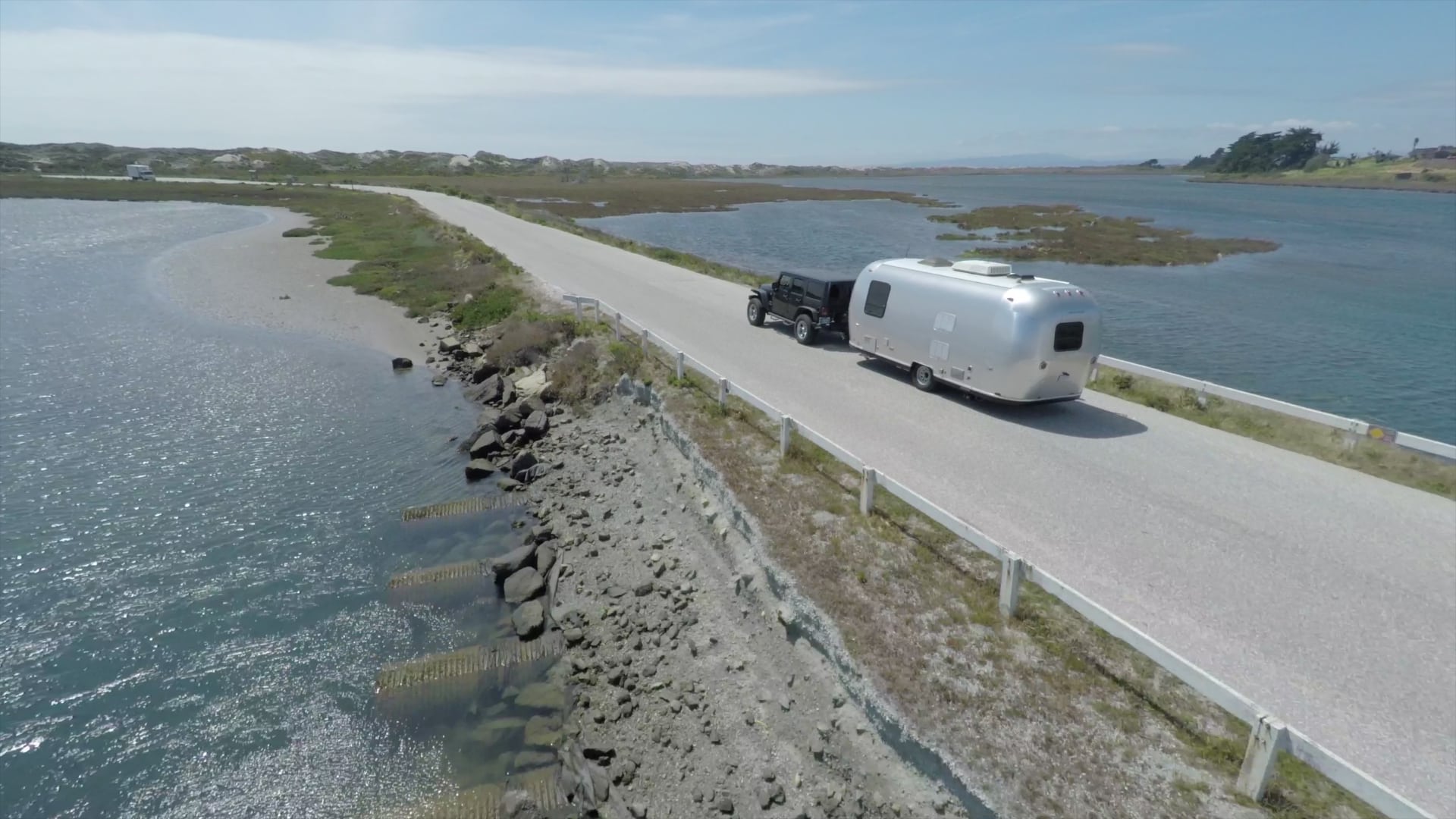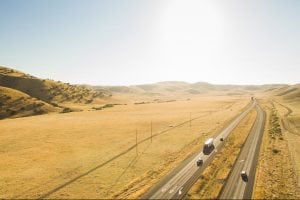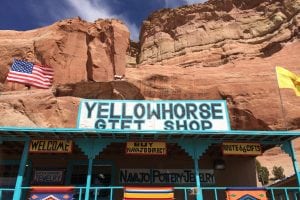Skift Take
Road trips in the United States are statistically on the rise due to both economic and cultural factors. These vacations have incredible potential to reflect what's simmering beneath the surface of contemporary America.
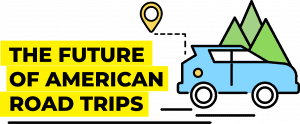 The Future of American Road Trips is a three-part deep dive examining why vacationers hit the road, where they spend their money, and how travel brands evolve alongside the vehicles that make road trips possible. Check out part one, part two, and part three.
The Future of American Road Trips is a three-part deep dive examining why vacationers hit the road, where they spend their money, and how travel brands evolve alongside the vehicles that make road trips possible. Check out part one, part two, and part three.
The American road trip is about to change dramatically, at least for some people. Electric vehicles have already altered a few basic elements and autonomous cars could eventually make the experience unrecognizable. And yet regular old gas-fueled road trips are surging in popularity right now, for both economic and cultural reasons.
Over the last century, commercial aviation in the U.S. has gone from the so-called golden age, which was only golden for some, to a declining first class and a basic economy cattle car. The experience of train travel has similarly degraded, without the benefit of democratized prices.
But the affordable driving experience is on the rise, helped by new technologies and services. The last decade brought Waze, Spotify, Foursquare, and trip-booking sites like Roadtrippers, just acquired in February by TH2, a joint venture with two of the world’s largest RV companies.
As Americans look ahead to another summer season of getaways, a subset of the tourism industry, from roadside hotel chains to mobile mapping services, is thriving — catering to vacationers behind the wheel.
For some, nostalgia is a motivator. All these years after Jack Kerouac’s 1957 novel On the Road, the post-World War II Detroit auto industry boom, the AAA TripTik guides, and even the Model T Ford bringing visitors to national parks for the first time in the 1910s, the American road trip — which we’ll define broadly as any driving vacation that includes multiple stops — runs deep in travelers’ hearts. The enduring appeal of the open highway, with the freedom and serendipity that car travel allows, is still a draw.
But not everyone is motivated by the fond memories. Millennials who’ve never read Edward Abbey’s Desert Solitaire can still hit the road in search of a seminal experience, even though so many millennials don’t own cars and cannot yet afford them.
Despite the rise of the sharing economy, Americans traveling for leisure in cars they already own is a clear first choice nationwide. Seventy-six percent of domestic trips in 2016 relied on the traveler’s own vehicle as the primary mode of transportation, according to the U.S. Travel Association’s 2017 Domestic Travel Market Report.
Road trips are statistically hot across demographics. Thirty-nine percent of U.S. leisure travel in 2016 included a road trip, up 17 points from the year prior, according to MMGY Global’s 2017–18 Portrait of American Travelers study.
Consumer expenditures on road trip travel surged from $66.6 billion in 2015 to $113.7 billion in 2016, according to MMGY, and domestic vacations made up 85 percent of American vacations, up 7 points from the year prior.
So what keeps the American road trip on people’s minds, and on their phones, when deciding what type of vacation to book this summer?
Road Trips Have Bipartisan Appeal in Trump’s America
Road trips have always offered freedom, which comes in many forms, to a very broad audience. Nearly every road tripper who spoke to Skift referred to freedom, flexibility, or the lure of the open road. Democrats and Republicans may disagree about international travel bans and post-9/11 airport security, but the liberty to hit the road domestically, in one’s own car, according to one’s own rules and schedule, is the way to go for so many.
“What’s very American about the road trip is: I will decide where I’m going to go, I will decide where I’m going to park my car, I will decide where I’m going to camp,” said Darius Nabors, who quit his university fundraising job to visit all 59 national parks in 59 weeks at age 30, celebrating the park service’s 100th anniversary. “That’s very different from the European public transportation type of model.”
“Americans would be like: I want to be in control of my own destiny. You get that American individualism,” said Nabors.
The top reasons for taking road trips hinge on exactly this kind of flexibility and convenience, according to MMGY Global’s 2017–18 Portrait of American Travelers study. No. 1 is the ability to make stops along the way, followed by the ability to pack everything needed for the vacation in the car, and then lower vacation costs.
From a social perspective, the study said 75 percent of road trippers cited experiencing different cultures as a motivation to travel, as opposed to 69 percent of non-road trippers. This is significant in the Trump era, as the chasm between Democrats and Republicans gets wider, often corresponding to the familiarity gap between coastal liberals and heartland conservatives.
Many people travel to better understand this divide in America, according to Sam Highley, founder and CEO of luxury road trip company All Roads North, established in 2014.
“There are Coastal Americans, who tend to be our clients, striving to understand their own country a little bit more and wanting to travel through places they don’t know and feel they don’t understand,” said Highley. Clients will approach him and say, “We don’t know our own country as well as we maybe know Eastern Africa.”
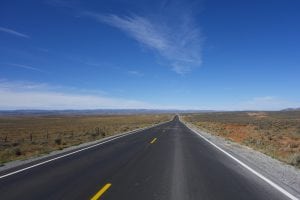
The Salt River Range in Wyoming, a region attractive to some luxury travelers. Photo by Sam Highley, All Roads North.
One experienced road tripper found that venturing beyond the interstate is what promotes cross-cultural understanding — he asked to be identified only as Eric, a 56-year-old media technology entrepreneur based near Houston who will clock 8,000 miles in road trips in 2018.
“Once you start going into the small towns, the small restaurants, talk to people, see actually what’s going on, there’s no life left in them. They are gone, whether it’s Walmart took the jobs away or the factory closed,” said Eric.
“When you do those kinds of trips, you do gain more empathy for people who are living in these places — The world’s evolved and left them behind,” he said. “I do think that it’s incredibly valuable if people from the cities can get into some of these rural areas and realize that people are people.”
“Right now [coastal Americans] don’t go inside and the interior doesn’t come outside,” said Vaughn Dabney, a 34-year-old author, entrepreneur, and app developer based in Los Angeles. He took a two-month road trip around the U.S. covering 11,000 miles in 2017. “We’re so divided, I think brands could help normalize that experience, get people to go to Wyoming.”
Helping people understand the rural interior is crucial for some tourism boards, especially the one representing indigenous communities. “Road trippers are extremely important for our niche market because Indian Country tourism isn’t exactly located conveniently in an airport shuttle parameter, by an airport,” said Camille Ferguson, executive director of the American Indian Alaska Native Tourism Association.
On the contrary, some people road trip to get away from societal issues. According to the Enterprise Annual Weekend Getaway Survey, 85 percent of respondents said they plan to escape on a weekend trip in 2018, up from 78 percent in 2017. When asked why they want to escape more in 2018 than in 2017, the top reasons were stress (43 percent), news (39 percent), the current political climate (38 percent), and social media (24 percent).
Politics and culture aside, road trips appeal to people in different parts of the country for their own reasons. Urban northeasterners want to trade broken mass transit for the peaceful country. Others in the Rust Belt, Bible Belt, and Midwest dream of national parks out west, because those in the east are sorely lacking in purple mountain majesties. Rural middle Americans are already accustomed to driving long distances, and weekend camping and hunting trips are a fixture for many families.
Nabors grew up in Fort Collins, Colorado, and road tripped regularly to national parks in Texas, Montana, and Washington. “That was what we did as a family. We would just load up in the Suburban at 4 a.m. and drive to some place across the country,” said Nabors. “For me, [visiting all 59 national parks] was like going back to my childhood.”
“I see parks as the country’s great equalizer,” said Nabors of their accessibility as public lands.
“This is America’s last culdesac,” said Jeff Cavins, co-founder and CEO of peer-to-peer RV rental platform Outdoorsy, about Kampgrounds of America. Cavins recalled the 1950s and 60s when he felt children could run around their neighborhoods safely. The two companies have a marketing partnership.
Cavins said that coastal urbanites may not realize that the rest of the country is traveling by RV, citing venture capitalists in San Francisco who doubted his startup idea, calling it a “poor man’s vacation.” Cavins reported saying to them, “There’s another 300 million Americans out there and this is the way they’re spending their weekends.”
In the early days of Nomadness Travel Tribe, a leading organization in the black travel movement, founder Evita Robinson led an RV trip from New York to Los Angeles purely because she envisioned it in a dream. “It made Tribe open up the United States to me,” said Robinson of the 2013 trip, sponsored in part by Hotels.com. Robinson stopped periodically to speak at historically black colleges and universities, picking up and dropping off Tribe members along the way.
From the Nomadness RV trip:
“There’s a historical value for black families that live in the North, but with origins in the South, of this road trip culture,” said Robinson, who grew up driving annually from New York state down to South Carolina to see family.
“If we brought the RV tour back now? Oh forget about it,” said Robinson. “It’d be insanity.”
The Exclusions of Air, Train, and Bus Travel
Especially in post-9/11 America, driving is in some ways the freest form of travel. It’s not the fastest in a country that’s 3,000 miles wide, and it has its dangers, but it also enjoys many comforts over contemporary air, train, and bus travel.
Air travel is more rife with constraints and discomfort than ever before. Even the so-called golden age of the 1950s and 60s has been over-romanticized according to Devin Liddell, principal brand strategist at design firm Teague, which focuses largely on travel and mobility.
“The golden age of air travel was smokey and racist,” said Liddell. “Airlines in their earlier iterations helped to segregate flights informally, based on who they were speaking with on the phone.”
Today flyers can’t smoke on board, but they wait for hours in TSA lines, followed by invasive searches that often discriminate against Muslim travelers, other travelers of color, and transgender travelers. Rampant Islamophobic profiling in airports led to the rise of “flying while Muslim” on social media.
Tension on board leads some aviation workers to violence, often against people of color and other marginalized groups — Dr. David Dao was dragged off a United flight, Dr. Tamika Cross faced racial discrimination on a Delta flight, Khairuldeen Makhzoomi was ejected from a Southwest flight, and a young autistic girl was ejected along with her family from a United flight. The NAACP issued a travel advisory against American Airlines for discriminatory behavior.
Ever-shrinking seat pitch and massive tech failures on Delta, United, and Southwest are the least of some people’s concerns.
“Flying has changed in the last 15 years or so and rarely is it an enjoyable experience,” said experienced road tripper Eric, who felt the consolidation of airlines was in part to blame. “I had a long-term preference for Continental, but now that it’s United, it is what United always has been, which is generally an unpleasant trip.”
Train travel may not suffer from identical issues, but the rail network itself is limiting — it’s difficult to take Amtrak to a national park without needing to rent a car as well. Ticket prices are another deterrent, as the government-sponsored system can’t afford to compete with many airfares, and recent fatal accidents and infrastructure weaknesses mount.
Amtrak is by far most useful for commuters and business travelers in the clogged Northeast corridor — not leisure travelers. Trump’s $200 billion infrastructure plan, which would improve rail and airports, is still a ways off and puts much of the remaining funding burden on states, localities, and the private sector.
Discount bus companies like BoltBus, owned by Greyhound, and Megabus, operated by Stagecoach Group, beat everyone on price with $1 advance fares, but service is mostly limited to urban areas near the coasts.
One particular startup called Roadies is trying to disrupt the road trip space by having vacationers sleep on a bus overnight and do activities during the day, but the product reads much more like a group bus tour than a road trip.
And yet, these limitations don’t mean that car travel is made of 100 percent freedom.
Car Travel Fails Some Americans
Crumbling road infrastructure and a sad backdrop of identical interstates and big box stores comprise a major pain point for 45-year-old Mack McKelvey, founder and CEO of marketing firm SalientMG and regular road tripper based in the Washington, D.C. area.
“There’s constant construction, which leads to a lot of traffic and backup, and it’s not very eye-pleasing,” said McKelvey. “The romanticized roads of the past don’t exist anymore; Route 66 is a great example.”
Savannah, Georgia, for example benefits from lying below the miserably clogged northeast corridor. “Coming south, once you get into the Carolinas and Georgia, your mindset sort of shifts,” said Joe Marinelli, president of Visit Savannah. “You get away from those densely populated areas. Now you’re headed to sunshine, you’re probably headed to a beach, an amusement park.” He cited Asheville in North Carolina as well as Charleston and Hilton Head in South Carolina as part of the Savannah road trip circuit.
And yet, road trips to Savannah could be declining. Marinelli said that about 60 percent of visitors currently drive in, but the fly-in market is growing — Savannah now has 24 nonstops including from all of the New York, D.C., and Chicago airports.
Context is key however — the densely populated East Coast is a very different animal than the more spread-out Western states.
“The image of a road with nobody on it is so enticing to somebody who’s lived in a city. When you show a picture like that to somebody in Beijing they just go crazy over it,” said Bethany Drysdale, chief communications officer for Travel Nevada. “That’s something that we jokingly chide our California neighbors for — our highways are very well kept up. We only have a few main arteries in the state and so they have to be kept up.”
To speak of more serious limitations, the dangers of “driving while black” have flared as incidents of police brutality during traffic stops persist. Sandra Bland epitomized this in Texas in 2015 — after allegedly failing to use a turn signal, Bland was pulled over, subdued by force, arrested, then found dead in her cell three days later. Over in Missouri, the NAACP issued a travel advisory for the entire state in August, citing discriminatory legislation and other civil rights violations.
Driving while black is familiar to Vaughn Dabney, who covered 11,000 miles in a two-month road trip in 2017. “I’ve never innately been afraid of being pulled over by police officers until a few years ago when a lot of the unjust killing of black men and women started to occur more frequently, or was being captured more frequently.”
Dabney described himself as very optimistic about race relations, but still isn’t immune to driving while black. “I didn’t sway outside of any speed limits, I just took my time,” he said about his big road trip. “There was one incident where in Eufaula, Alabama, I was followed by police for maybe a mile, and they stayed in my blind spot. I was definitely nervous … That made me sweat a little bit, especially being in the South and being in a small town.”
Near Fort Worth, Texas, six Nomadness members sharing a conspicuous, 30-foot RV received hostile stares in a supermarket with confederate flags on display. “Not only do we need to get out of here, but we need to get out of here before it gets dark,” said founder Robinson. She took over the wheel from a darker-skinned man for safety reasons, not stopping to sleep until reaching New Mexico — eerily similar to firsthand accounts of fleeing the Jim Crow south through Texas during the Great Migration, one of which is chronicled in detail in Isabel Wilkerson’s book The Warmth of Other Suns.
On one of four cross-country road trips, 40-year-old Sylvia Marie Roldán of Ecuadorian-Guatemalan descent was never pulled over — but her darker skinned Jamaican traveling companion was pulled over twice, once in Texas and once in New Mexico.
“I was legit recording,” said Roldán of filming the police officer with her phone.
These events have led to a couple of modern-day Green Books. The original Negro Motorist Green Book helped black travelers find safe places to stay, eat, and gas up in the segregated Jim Crow South as lynchings soared, and it was published between 1936 and 1964.
A best-case scenario road trip for black Americans during Jim Crow had little to do with the free open road. “At best maybe you get pulled over and get a speeding ticket. Or maybe you get pulled over and get harassed, or you’re humiliated in front of your family,” said Allyson Hobbs, associate professor of American history and director of African and African American studies at Stanford University. Hobbs teaches a class specifically on road trips. “Maybe you stop at a restaurant or hotel and they won’t allow you to stay there. Maybe you stop at a gas station and they won’t let you get gas or use the bathroom.”
“People would really plan their trips, not having access to the kind of spontaneity that Jack Kerouac had,” said Hobbs, referring to his novel On the Road.
Today’s Green Book largely takes the form of the black travel movement, which provides a familial network of travelers facing racism, sharing safety-related knowledge online. There’s also a new paperback titled The Post-Racial Negro Green Book by Jan Miles.
Women driving alone also face constraints. Solo female travelers, a group growing in prominence over the last decade, make many choices to protect themselves, whether it’s not driving at night or paying extra for a more secure hotel room.
Experienced traveler Natisha Willis reported taking a solo cross-country road trip from Maryland to California, and said her only source of anxiety was the prospect of driving through Texas after dark, citing Sandra Bland.
However, travelers’ resilience is high. Nearly all of the road trippers who spoke to Skift expressed that these limitations would not deter them from future road tripping. When we look at safe road trip experiences, driving gives the traveler maximum mobility, which opens up some of the most popular road trip destinations unreachable by air or rail: national parks.
Road Trippers’ Love for National Parks Goes Unrequited
National parks historically thrive on road trippers, but unlike roadside hotel chains for example, some parks can’t afford to keep attracting more people. The country’s most popular parks face an acute overtourism problem as hordes of vacationers crowd into the most popular sites, damage them, leave garbage, pollute, and strain the park’s infrastructure.
Parks are just now beginning to focus on ways to manage road trippers and to welcome them in a sustainable way. This problem isn’t new per se — when early motorists took to the parks in the early 20th century, park management had to adjust to the influx.
Recreational visits to national park lands rose considerably between 2013 and 2017, except for very little change during the final two of those years, according to the National Park Service: 273 million in 2013, 292 million in 2014, 307 million in 2015, 330 million in 2016, and 330 million in 2017. That amounts to a 20 percent increase in visitation in just five calendar years.
A timelapse of a single hour at the entrance to Zion National Park on Good Friday, a popular holiday weekend:
National parks aren’t exactly swelling in size to keep up with visitation — in fact, some public lands are being reduced. In 2017, Interior Secretary Ryan Zinke reviewed 27 lands for reduction. In 2018, Trump reduced the size of Utah’s Bears Ears National Monument to around 15 percent of its original size, and the state’s Grand Staircase Escalante National Monument was reduced to around half its original size.
On the upside, Route 66 may soon undergo a revival — A proposed bill would make the highway a National Historic Trail. In addition, the American Indian Alaska Native Tourism Association ran a 2016 marketing campaign around a guidebook called American Indians & Route 66.
Back when the Mother Road was created in 1926, it served a practical purpose: reducing the mileage between Chicago and Santa Monica, California, by more than 200 miles. However, Route 66 was decommissioned as a federal highway in 1985 and many of its communities suffered from declining visitation because the Mother Road was no longer the fastest way from point A to point B. Today, some parts between Albuquerque, New Mexico, and the turnoff toward the Grand Canyon in Arizona are desolate: giant parking lots sitting empty, souvenir shops gathering dust, retro motel signs with broken light bulbs.
Route 66 clearly doesn’t have an overtourism problem, but many national parks do.
Among the tactics for controlling overtourism is spreading the tourists out to lesser-known areas through marketing campaigns. Darius Nabors, who visited all 59 national parks in 59 weeks, avoided crowds by accepting suboptimal weather in the off-season and camping in the backcountry.
“My general rule of thumb is that if you hike four miles in, you avoid probably 98 percent of the people,” said Nabors. His family even did this crowd avoidance when Nabors was younger — if his spring break lined up with Texas’ spring break, they wouldn’t go to Big Bend National Park. Regular road tripper Greg Mand said, “I live three and a half hours from Yosemite Valley and it’s such a problem in the summers they’re now starting to ban cars going into the valley and they do take shuttles in.”
Another tactic for combatting overtourism involves raising prices, i.e. park entrance fees. In April the National Park Service announced it would raise the entrance fees in 117 of the 417 parks, monuments, and sites, with changes rolling out through 2020. The extra revenue is meant to help address $11.6 billion of unresolved maintenance and infrastructure issues. Donald Trump’s proposed 2019 budget controversially calls for funding the parks by letting private companies lease oil drilling rights in the very parks he’s charged with conserving.
Some visitors are unhappy about the fee hikes. “Even just a slight raise in the prices can dramatically change the demographics of the people who are able to go,” said Allyson Hobbs of Stanford University. But on the upside, more than two thirds of the parks will still be free to visit.
Non-national park campgrounds have a role to play in battling overtourism as well. “Our campgrounds are a relief to that national park system,” said Toby O’Rourke, president of Montana-based Kampgrounds of America, whose 500 sites are open to the public. “We have KOAs surrounding all of the national parks, outside the border.”
Camping is on the rise, according to Kampgrounds of America’s 2018 North American Camping Report. The number of households that camp at least once a year increased 20 percent between 2014 and 2017, from 32 million to 38.5 million. The number of households that camp at least three times a year increased 64 percent, from 11 million to 18 million, over the same time period. The largest increase by region, 5 percent, occurred in the Northeastern U.S. with its dense urban areas.
Only one in five camping nights occurred at a campground inside a national park.
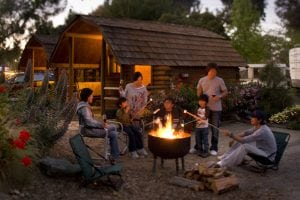
A camping cabin at a Kampgrounds of America site. The company sees an uptick in Americans’ desire to camp. Photo by KOA.
The uptick is partly explained by social media and the sharing economy. These days, people who’ve never camped and don’t know where to begin can easily get inspired, find answers to their questions, and rent or borrow potentially expensive gear. “It’s breaking down the barriers to entry. You don’t have to buy all these things to go camping,” said O’Rourke. Ninety-seven percent of campers bring their technology with them, but only one in five campers said that technology actually enhanced their experience.
The web also breaks down barriers for people of color — 14 percent of non-white millennials were new to camping in 2017 and 34 percent said they only started camping in the past few years, compared to 18 percent of white millennials. “Millennials are the largest segment of the camping population right now, 40 percent,” said O’Rourke.
The economic reasons for road tripping seem more logical than the cultural and psychological reasons, but both are driving this upward trend. At the very least, Tom Marchant — owner and co-founder of luxury tour operator Black Tomato — offered a simple explanation for the urge to hit the road:
“That’s a sense of what the road trip is — it’s a sense of control. It’s us in our car. We can choose where we want to go.”
Stay tuned for part two of The Future of American Road Trips, in which we explore how tour companies and hotels are meeting needs at both ends of the economic spectrum, for luxury road trippers and the budget set.
The Daily Newsletter
Our daily coverage of the global travel industry. Written by editors and analysts from across Skift’s brands.
Have a confidential tip for Skift? Get in touch
Tags: black travel movement, camping, national parks, politics, road trips
Photo credit: Road trips are statistically on the rise in the United States, and they reflect much of the state of contemporary America. Outdoorsy.com
